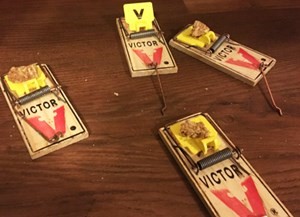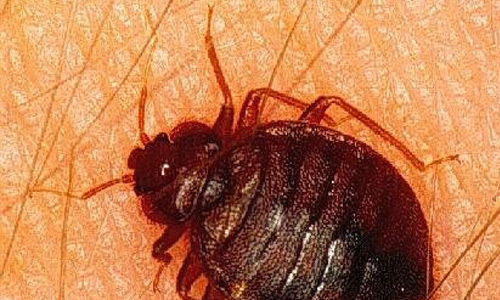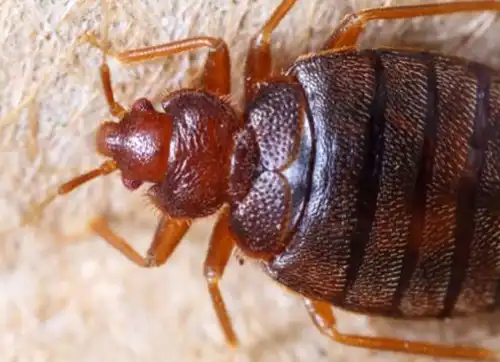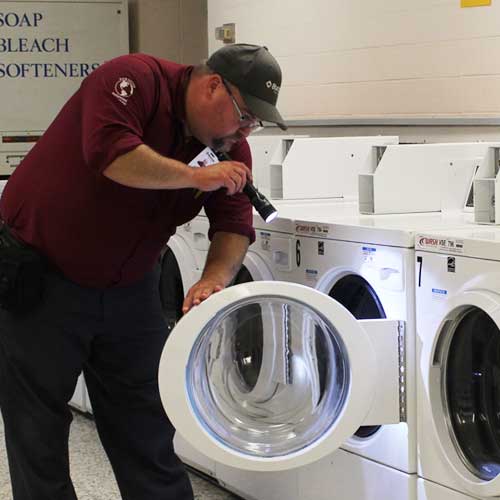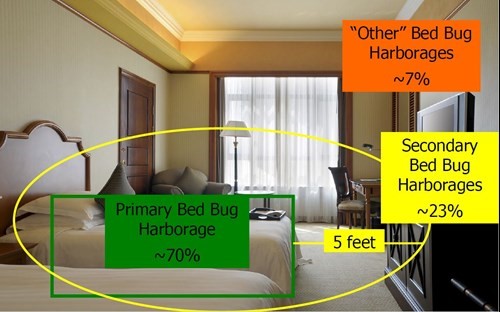Whether you are in a hospital, doctor’s office, retirement community, or some other form of healthcare facility, you expect things to be clean. Hospitals and doctor offices, in particular, are expected to have a sterile environment where beds, patient areas, medical equipment, and other important components of patient care are kept clean and free from insects.
Why are healthcare facilities a bed bug risk?
Because hospitals, hospices, elder care facilities, and group homes experience significant human traffic carrying personal belongings and host sleeping people in multiple rooms, they are at high risk for bed bug infestations. These characteristics make them places where bed bug populations can grow, spread, and impact staff, visitors, and patients.
Getting rid of bed bugs in hospitals
Bed bugs are hard to get rid of in any scenario because they are very good at hiding and are very tiny. Unless you are trained to search all potential bed bug hiding places, you could easily miss a few of them. Bed bugs hide within the folds of a mattress, cracks in a piece of wooden furniture or behind photos, pictures, within light fixtures, or in electrical sockets. This makes it hard to find them all and missing a couple can cause a re-infestation. Just when you think you’ve gotten rid of the bed bugs, they can come back and start an infestation all over again.
The bad news is there is no real way to prevent these bugs from entering your facility. However, quick and effective interventions can stop the spread and reduce the risks of a serious infestation in inpatient rooms, lounges, waiting rooms, or anywhere else in your healthcare facility. Because bed bug infestations in healthcare facilities happen often, managers invest heavily in pest control treatment and prevention programs.
Develop a bed bug treatment plan
Because bed bugs are so hard to find and require special tools and training, it’s best to develop a bed bug prevention and treatment plan for your hospital, doctor’s office, or facility. More than one treatment is typically necessary to fully get rid of a bed bug infestation and prevent them from returning. In urgent cases, Batzner uses steam to get rid of infestations and turn rooms around quickly. The best bet for those running a healthcare facility is to have professionals set up a treatment plan and provide reliable technology and methods to detect, remove and prevent bed bugs.
If a facility experiences periodic introduction of bed bugs, a regular detection program with the help of a pest management professional should be considered. Inspection and monitoring should include the areas most prone to bed bugs such as lounges, patient and family waiting areas, storage areas for housekeeping and furniture, and laundries. Bed bug canines are especially useful at monitoring and preventing bed bug infestations.
What can health care facility managers do to prevent bed bug concerns?
It’s important to understand that bed bugs are attracted to a host, and are transported primarily by people and their belongings. Therefore, populations of bed bugs in a facility have more do with the patients, visitors, vendors and staff of an organization than the structure itself.
- Facility managers should have a published bed bug protocol, and staff should be trained to recognize bed bugs and evidence of their presence.
- Intake procedures to screen incoming clients and bag their belongings may also help. Items suspected of infestation should be contained until they can be removed, sanitized or disposed of.
- Helpful preventative strategies include regular vacuuming or steam cleaning areas prone to bed bugs, such as under and around beds, upholstered furniture and at wall/floor junctions.
- Managers should ensure there is not clutter, cracks, crevices and holes near beds.
- Waiting rooms, visitor lounges, common areas, laundry rooms, and equipment such as wheelchairs and food carts, should be regularly inspected for bed bugs.
Professional bed bug detection and treatment options
The pest control company hired should have trained specialists that know how to seek out the hiding places where bed bugs hide. They should use the latest technology and stay up to date on new methods of detection. By partnering with a reliable pest control provider, you can focus on running other aspects of your healthcare facility and not have to worry about pests and pest control.
Whether through the use of bed bug dogs or other detection methods, pest control companies like Batzner Pest Control can quickly confirm infestations. Once identified, your pest control partner should use methods like heat treatments or conventional treatments to get rid of the bed bug infestation.
Your reputation depends on bed bug control
The last thing you need is a report of bed bugs or other pests in your healthcare facility and patient rooms becoming public. Your reputation can be damaged, which is why it’s best to get a pest control treatment plan in place before an infestation takes hold.
If you run a healthcare facility and worry about a bed bug infestation, contact the experts in bed bug control at Batzner Pest Control for a consultation today.



